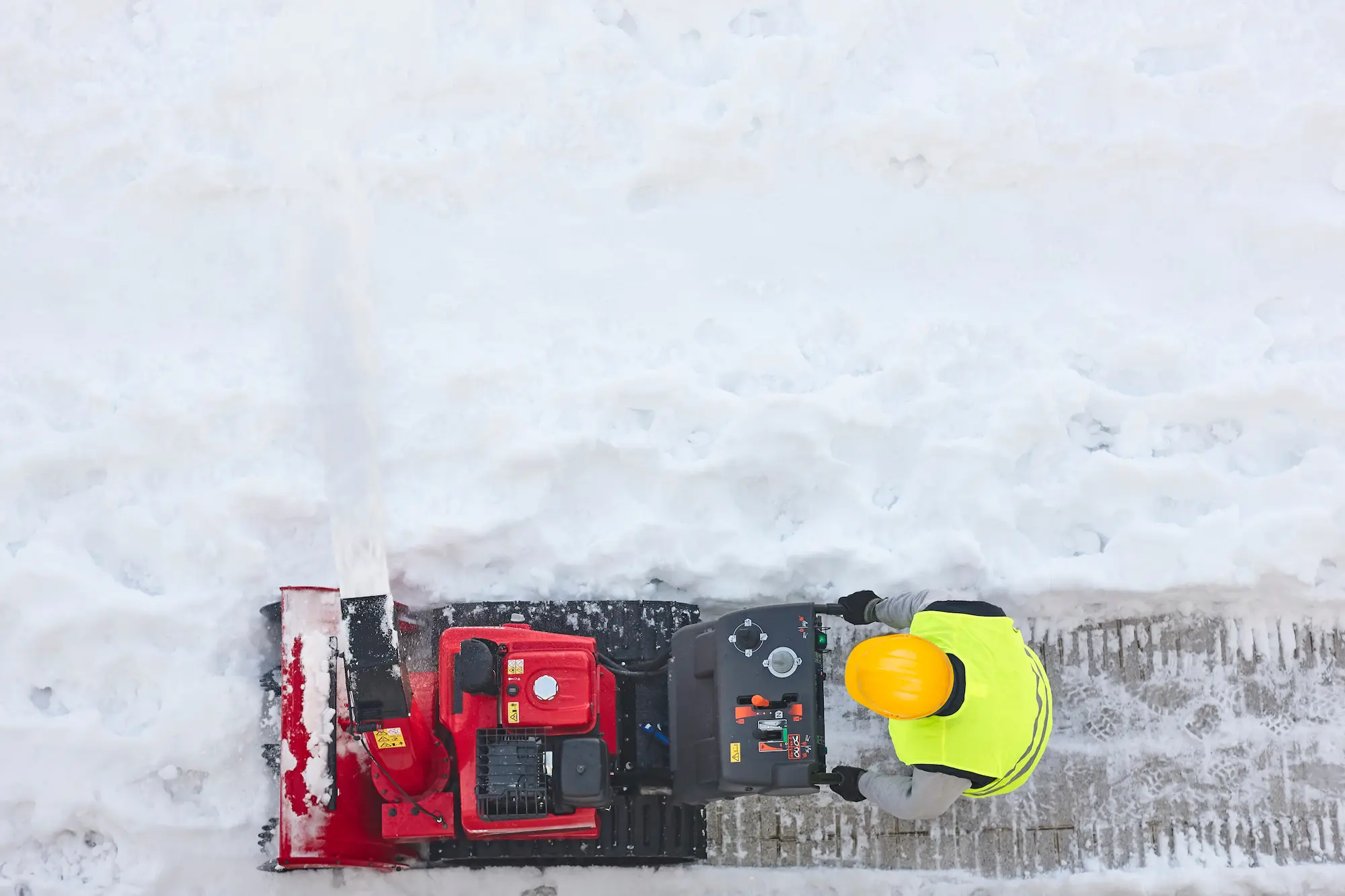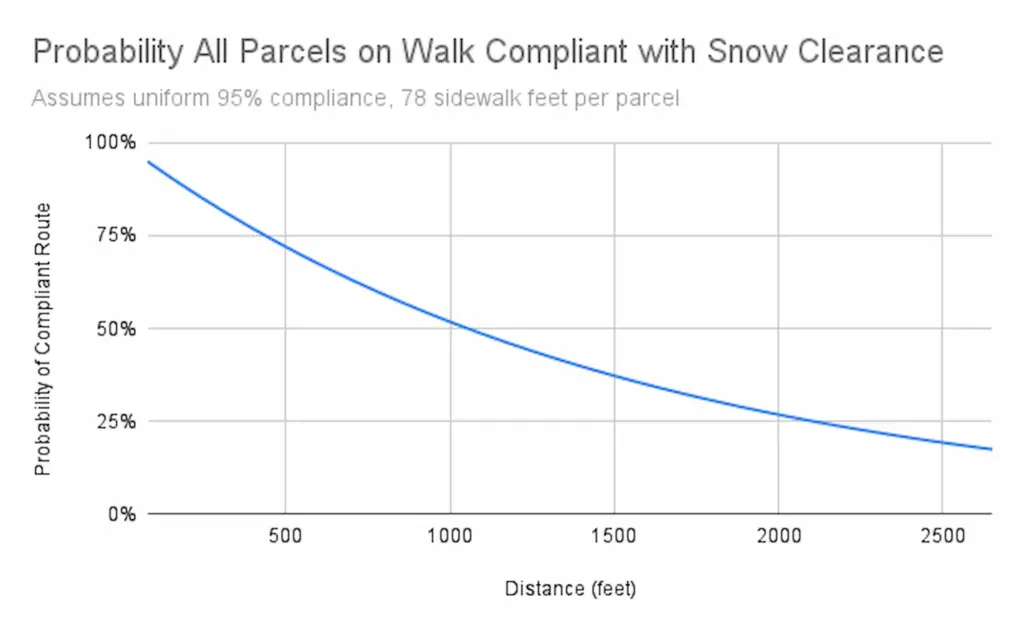
In response to community pressure, a legislative directive to address Minneapolis municipal sidewalk plowing and ice removal passed unanimously through Minneapolis City Council in late February. City Council will act on the directive and report back in June.
“Now that we’re experiencing a record-breaking blizzard, I want to emphasize that moving forward with this now is part of ensuring that our city is ready to respond to the coming impacts of climate change,” Council Member Robin Wonsley stated as she introduced the legislative directive for a multidisciplinary study on City of Minneapolis municipal sidewalk snow and ice removal. Wonsley has been a big proponent of this effort for accessible, equitable, and safe sidewalks year-round.
What’s next for a preventative vs. punitive approach to snow removal in Minneapolis?
Path to Program Funding
Minneapolis residents won’t see a municipal sidewalk plowing program unless the City Council or Public Works Director Margaret Anderson Kelliher choose to allocate funding in the 2024 budget, using the findings from the legislative directive.
Sidewalk Plowing and the Transportation Action Plan
The City of Minneapolis outlines its goal to increase trips by walking from 16% (2019) to 25% by 2030 in the Transportation Action Plan (TAP). Additionally, the TAP states:
As the number of people walking continues to increase, it is critical that it is formally recognized as a mode of travel and made more welcoming, accessible, and safer as a transportation option – which, without other conflicting modes, is inherently a safe activity.
It’s questionable whether or not the City of Minneapolis is on track to meet trips made by walking or ensuring accessibility and safety year-round. Minneapolis residents experience upwards of five months of winter weather in Minnesota. If Minneapolis wants to meet its outlined goals in the TAP, it must prioritize implementing a municipal sidewalk plowing program. Mobility and accessibility is not a seasonal privilege; it is a basic human right.
Andrew Johnson, Council Member for Ward 12, supports the TAP but does not want to fund a municipal sidewalk plowing program, views that appear to oppose each other. Instead, Johnson wants to double down on enforcement, a punitive approach that can be as time-intensive as the labor he says Minneapolis Public Works & Infrastructure doesn’t have to support a municipal sidewalk plowing program.
“While I support updating cost projections, I don’t believe we should implement citywide municipal clearing at this time. […] Given that random sampling found 95% of households in compliance with their sidewalk clearing responsibilities, a better approach would be to target the 5% who aren’t.”
The random sampling alone isn’t necessarily statistically significant, and it definitely doesn’t match the lived experience of any Minneapolis resident this winter. However, even if we take that number and do some basic math, it does not translate to easily getting around as a pedestrian in the winter.
“95% Compliance” = Patchwork Accessibility
Most property owners clear their sidewalks to some extent. However, you are unlikely to walk very far without encountering an uncleared sidewalk. Approximately 95% compliance with sidewalk snow clearance sounds good in theory, but only if you plan on visiting your next-door neighbor. Statistically, you can’t reliably expect to go far along a cleared path.
The 95% compliance rate is in the ballpark of the several different rates the City has published depending on the year and measurement methodology. The 78 sidewalk feet per parcel is calculated from the City’s 1,910 sidewalk miles and 129,370 parcels.

The word “uniform” in the chart’s subtitle means two somewhat different things. First, it means that the 78 feet per parcel average is achieved by all parcels being uniform. Second, it means that each parcel has its own 95% probability of compliance independent of its neighbors. These assumptions are not entirely realistic. Some parts of the city have larger parcel sizes than others. Compliance of neighboring parcels may be correlated.
The status quo approach produces a patchwork of cleared parcels. And a patchwork isn’t useful for walking as a reliable mode of transit. What’s needed is an approach that clears a complete network of paths, not parcels.
So, better enforcement must be the solution, right?
Punitive Strategies Are Not Working
Council Member Johnson is proposing to first invest additional resources into an enforcement system that is failing. While it is unclear if Minneapolis is on track to meet TAP pedestrian goals, the city is on track to reach a record-high number of 311 complaints about winter street and sidewalk conditions. It is evident that the status quo of enforcement is not working. Additional enforcement efforts would mean wasted resources on a punitive approach that:
- harms our most vulnerable community members
- restricts mobility
- contributes to flooding issues with freeze-thaw
- pollutes our freshwater supply with unmanageable salt use
- detracts from the City of Minneapolis’ own goals of eliminating severe and fatal car crashes, reducing carbon emissions, and shifting car trips to more sustainable and affordable options
A preventative solution ensures that every Minneapolis resident can walk or roll where they need to go year-round. Additionally, there is opportunity in the labor needs outlined by Councilmember Johnson. A municipal sidewalk plowing program can and should benefit local residents rather than outside contract work.
There are many other benefits. Local businesses can have improved access for customers, and working class people will be able to contribute towards reducing carbon emissions when they can reliably get to work by taking transit. The human costs of slip-and-fall injuries would decline, and we would no longer burden elderly and disabled property owners with snow removal responsibilities. Being able to reliably get around as a pedestrian is proven to improve public health.
Yes, a program like this will cost money. But the efficiency of a city-led municipal sidewalk plowing program has an immense return on investment for the greater public good. We cannot afford the cost of the status quo.
 Okay Minneapolis, it's poll time.
Okay Minneapolis, it's poll time.